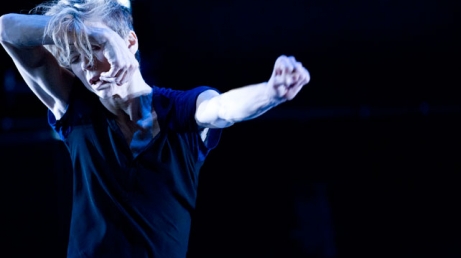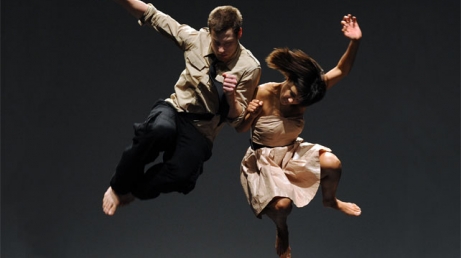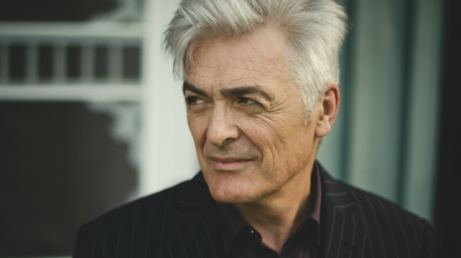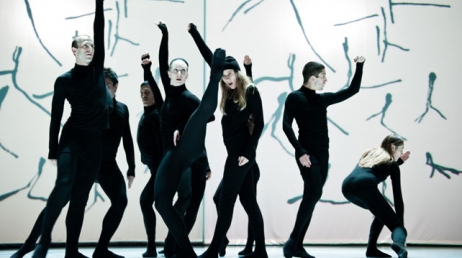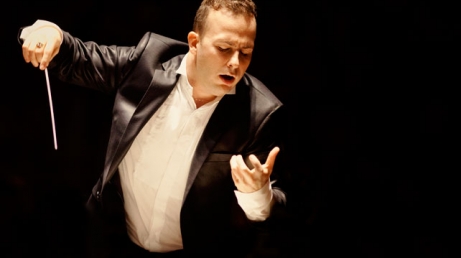The National Arts Centre (NAC) is Canada’s only bilingual multidisciplinary performing arts centre. That’s right—the one and only! From the day it opened in 1969, the Centre’s mission has been to showcase the very best of the performing arts in Canada in both English and French. “From the beginning, the National Arts Centre has belonged to all Canadians,” says Peter Herrndorf, NAC president and CEO. The NAC is a meeting place for our country’s top creative talents, Anglophones and Francophones alike, and bilingualism is rooted in its DNA. Its bilingual character, reflected in myriad ways in all of its programs and activities, enriches Canada’s cultural landscape by bringing together artists from English- and French-language communities.
Canada boasts several artists who are equally popular with English- and French-speaking audiences. One such talent is the brilliant Robert Lepage, former artistic director (1989–93) of NAC French Theatre. Many of his plays have been presented in Ottawa in both official languages, including notably La face cachée de la lune / Far Side of the Moon (in 2003) and Le dragon bleu / The Blue Dragon (in 2009). An updated version of his play Les aiguilles et l’opium will be staged in the NAC Theatre in spring 2015, first in French, then in English (Needles and Opium), thanks to a creative partnership between the artistic directors of NAC French and English Theatre, Brigitte Haentjens and Jillian Keiley (both recipients of the prestigious Siminovitch Prize). “I couldn’t be more thrilled to present this masterpiece by this Canadian master,” says Jillian Keiley. “Conceived in 1991, the show was thought then to be years ahead of its time—and 25 years later it’s still light years ahead of its time. I’m so proud to partner with the Magnetic North Theatre Festival and NAC French Theatre to present it.”
The original production of the play, premiered in 1991 during Robert Lepage’s term as artistic director, received rave reviews in both English and French. Robert recalls, “[Being at the NAC] was a really exciting time for me. I learned a lot about who I am and what my aspirations are. It gave me the means to produce and create a lot of stuff I wasn’t able to do before.” The play’s upcoming run at the NAC is just one example of the Centre’s commitment to presenting the work of Canada’s leading artists in both official languages. As well, theatre lovers who are equally comfortable with the language of Shakespeare and that of Molière can attend both shows and observe the differences between them, in a truly immersive cultural and linguistic experience.
Marie Chouinard is another name that is familiar to Anglophones and Francophones alike. The NAC is proud to have been part of this exceptional dancer and choreographer’s journey to national and international stardom, and to count her among NAC Dance’s associated artists. Marie reports that her “national moment” came about because of a chance encounter during an intermission at the NAC more than 25 years ago. Catching sight of the NAC Dance producer at the time, she approached him to ask for the NAC’s support in establishing her own dance company. The answer was an immediate and unqualified “yes,” and so began Compagnie Marie Chouinard and its long association with the NAC, which has presented all of the company’s works. Dance fans will want to mark their calendars for the company’s next visit on January 17, 2015, when once again Anglophone and Francophone audiences will enjoy a breathtaking performance in a language that is … universal.
While dance—and music, for that matter—is considered a universal language, artists working in those disciplines generally draw their audiences primarily from their own linguistic community. You may say that’s hardly surprising; and yet, by providing a national showcase for our country’s most accomplished artists, the NAC proves each and every day that culture transcends linguistic barriers. In concrete terms, during the NAC’s upcoming season, Francophones in the National Capital Region who haven’t yet discovered brilliant young Alberta pianist Jan Lisiecki (June 19 and 20, 2015), hot Vancouver dancer-choreographers Amber Funk Barton and Josh Martin (October 23–25), and New Brunswick singer-songwriter David Myles (December 18 and 19) will be introduced to these outstanding talents; by the same token, Anglophones will have an opportunity to attend shows by such renowned Quebec artists as dancer and choreographer Louise Lecavalier (October 8 and 9), cello prodigy Stéphane Tétreault (April 20), and singer-songwriter Alex Nevsky (October 3).
The NAC’s linguistic crossover is rounded out by the contribution of members of Canada’s “official-language minority communities.” Say what? We’re talking about Rufus Wainwright and other Anglophone Quebec artists—like Montreal’s Thus Owls, playing the NAC Fourth Stage on October 18—and their Francophone counterparts outside Quebec, including Acadian rocker Lisa LeBlanc and Franco-Manitoban singer-songwriter Daniel Lavoie (NAC Studio, December 5).
No matter how you look at it, any activity that brings Anglophones and Francophones together is a win. For example, the NAC places high importance on its fun and informative concert series for young audiences, TD Family Adventures with the NAC Orchestra. These tremendously popular, bilingual Saturday concerts are a great way for parents to expose their children to their second official language, and provide an entertaining educational option for immersion students.
The National Arts Centre is more than a place, it’s an idea. It’s the idea of an institution that works with artists and arts organizations in every part of the country—Anglophone, Francophone, and of all ethnic backgrounds—to create a vibrant national showcase for the performing arts. The NAC delivers on this vision through a multitude of projects and initiatives: for example, the Governor General’s Performing Arts Awards Gala, a bilingual annual event produced by the NAC that celebrates some of Canada’s most brilliant performing artists. “I hadn’t heard of that artist before. What an amazing talent!” Time and time again, we hear comments like this at the close of the Gala evening—proof positive of the NAC’s ability to bring Canada’s linguistic communities closer together through the performing arts. As well, the NAC’s biennial Scene regional festivals shine a national spotlight on Anglophone, Francophone and allophone artists from various parts of the country, working in a wide range of disciplines. Next up (spring 2015) is Ontario Scene, a proud celebration of the rich cultural mosaic of Canada’s most populous province. Needless to say, Franco-Ontarian artists will be well represented in the mix!
As a national showcase for Anglophone and Francophone talent from coast to coast to coast, the NAC plays a unique and vital role in bridging Canada’s two solitudes.




